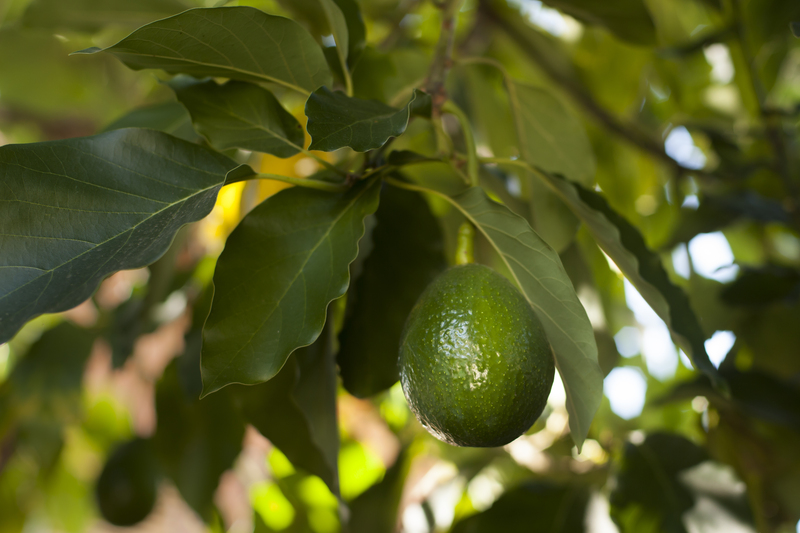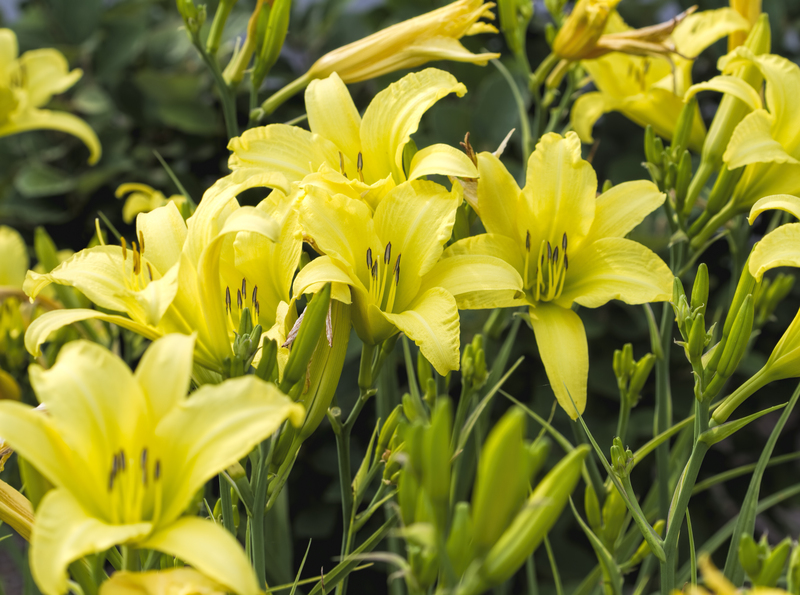Building a Harmonious Garden for Dogs
Posted on 23/08/2025
Building a Harmonious Garden for Dogs: A Comprehensive Guide
Creating a harmonious garden for dogs is more than just fencing off a piece of land. It's about designing an engaging, safe, and enriching environment that benefits both your canine companions and your family. Whether you have an energetic puppy or a senior dog that loves to meander, a well-planned garden can provide hours of entertainment, stimulation, and relaxation.
Why Tailor Your Garden for Dogs?
Dogs are curious by nature. They love to sniff, dig, and interact with the outdoors. However, a typical garden can be fraught with hazards--from toxic plants to unsecured fences. By specifically designing a dog-friendly garden, you nurture your dogs' physical and mental well-being while ensuring your prized plants and landscaping remain intact.

Essential Elements of a Dog-Friendly Garden
To achieve a harmonious garden for dogs, integrate the following core elements:
- Safety first - Secure boundaries and remove toxic substances.
- Canine comfort - Shade, water access, and soft surfaces for lounging.
- Engagement zones - Areas for digging, running, and exploring.
- Durable landscaping - Choose dog-tough grasses and plants.
- Easy maintenance - Design for easy clean-up and repair.
1. Ensuring Safety: Fences and Boundaries
The most critical step in making a garden harmonious for dogs is establishing secure borders. A fence is not only to keep your dogs in--it also protects them from potential external dangers, such as traffic or wildlife.
- Choose the Right Height: Some breeds can easily clear a four-foot fence. Standard heights are six feet, but check your dog's jumping ability.
- Digging Detectors: If your dog loves to dig, install fencing that extends underground or lay a barrier of chicken wire beneath the fenceline.
- Gate Security: Use self-closing, lockable gates, and check regularly for holes or gaps.
Tip: Avoid fences with sharp or rough edges to prevent accidental injuries.
2. Safe and Dog-Friendly Planting
Dogs will inevitably chew or eat plants. Thus, dog-safe gardening starts with plant selection.
- Avoid Toxic Plants: Common garden plants like azaleas, lilies, foxglove, and daffodils can be toxic to dogs. Research every plant you introduce, using resources like the ASPCA's toxic and non-toxic plant lists.
- Choose Hardy, Non-Toxic Varieties: Opt for sturdy grasses, sunflowers, marigolds, or snapdragons.
- Herbs for Enrichment: Plant dog-friendly herbs such as parsley, basil, and rosemary. These are safe and can even benefit your dog's health.
Consider mulching with untreated wood chips or large, smooth pebbles (never cocoa mulch, which is toxic to dogs).
Pro Tip: Raised beds and planters can protect more delicate plants and keep your curious pup at bay.
3. Paths and Zones for Exploration
Dogs love to patrol. By creating pathways and separate zones within your garden, you cater to your dog's instincts and minimize accidental plant damage.
- Defined Trails: Use pea gravel, flagstones, or bark chips to lay winding trails through your garden. Dogs learn fast and love designated patrols.
- Activity Spaces: Dedicate areas for digging, playing fetch, or chasing. Fill a corner with sand or soft dirt where digging is allowed.
- Secluded Retreats: Design cubbies or dens from shrubs or dog houses for napping and hiding, which help nervous or shy dogs feel more comfortable.
Remember: Well-worn tracks may already exist in your garden (your dog's favorite patrol route!). Embrace these pathways or enhance them rather than constantly fighting to redirect your dog.
4. Shade, Shelter, and Comfort
The summer sun can be dangerous for dogs. Integrate natural and artificial shelters to provide protection from the elements:
- Trees and Shrubs: Well-placed trees offer natural cooling. Dogwood, apple, or maple are good choices.
- Canopies and Awnings: If your garden lacks shade, install a sturdy pergola or pop-up tent.
- Dog Houses or Shelters: Waterproof, ventilated dog houses provide a year-round retreat.
Tip: Lay down dog beds or weather-resistant mats in shady spots to encourage lounging.
5. Water Features for Play and Hydration
Dogs enjoy water--whether for splashing or simply cooling off and drinking. Thoughtfully designed water features can become the highlight of a harmonious dog garden:
- Dog Pools: Small, shallow, non-slip pools are perfect for paddling and staying cool.
- Running Fountains: Interactive fountains or bubblers can stimulate interest. Ensure they use clean, fresh water.
- Accessible Drinking Areas: Always provide fresh water at various spots, especially in warm weather.
Never install deep ponds without proper safety, as small or elderly dogs may fall in. Also, monitor algae and keep water clean.
6. Durable and Safe Surfaces
Hard-wearing surfaces prevent muddy paws (and floors) and withstand high activity. The best dog-friendly landscaping materials include:
- Artificial Turf: Soft, easy to clean, and resilient. Look for pet-specific turf that resists digging and odors.
- Natural Grasses: Buffalo and Bermuda grass are tough varieties, resistant to dog traffic.
- Mulch and Pea Gravel: These reduce runoff and mud but ensure the size and type aren't choke hazards.
Avoid sharp stones or potentially toxic ground covers.
Creative Ideas for an Enriching Dog Garden
With the essentials covered, explore these creative touches to elevate your dog-friendly garden:
- Agility equipment: Set up low hurdles, tunnels, or weave poles for exercise and mental stimulation.
- Interactive toys: Install tetherballs or hanging ropes from trees for solo play.
- Edible plants: Plant carrots, blueberries, or peas--safe for dogs to munch (with supervision).
- Aromatherapy areas: Herbs like lavender and chamomile can have a calming effect on dogs.
- Observation deck: Give your dog a lookout point--tall platforms or gently sloping mounds to survey the garden.
Maintenance Tips for a Harmonious Dog Garden
Keeping your harmonious garden for dogs clean and functional demands regular maintenance:
- Cleaning up waste: Scoop regularly to keep the garden smelling nice and prevent the spread of parasites.
- Repairing damage: Check for holes, wear and tear, and trampled plants. Patch up as soon as possible.
- Refreshing water: Replace water daily and clean pools or fountains frequently.
- Inspecting fences: Check for loose panels or dig-outs.
- Seasonal checks: Assess for hazards like fallen branches or ice patches in winter.
Training & Supervision: Key to Long-Term Success
Even with a perfectly designed dog-centered garden, training and supervision are crucial. Teach basic boundaries such as where digging is allowed and which areas are off-limits. Consistent, positive reinforcement ensures coexistence between plants and playful pups.
Sustainable and Eco-Friendly Choices for a Dog Garden
Make your dog-friendly outdoor space environmentally responsible:
- Natural pest control: Avoid chemical pesticides or fertilizers--opt for organic solutions to safeguard your pets.
- Rainwater harvesting: Use collected rainwater for plants and non-drinking water features.
- Composting: Use dog-safe compost to nourish the soil (never compost dog waste).
- Native plants: Prioritize local, non-toxic species for better resilience and lower maintenance.
Common Mistakes to Avoid When Designing a Dog Garden
- Overlooking toxic materials: Always check that plants, mulches, and garden decor are non-toxic to dogs.
- Poor drainage: Dogs don't like swampy, wet ground; ensure effective drainage with grading or French drains.
- Neglecting interaction: Gardens are best enjoyed together--spend quality time playing and relaxing with your dogs outdoors.
- Ignoring supervision: No garden can replace supervision; always keep an eye on dogs to prevent accidents.

The Benefits of a Harmonious Dog Garden
A genuinely harmonious garden for dogs brings joy and enrichment to both dogs and owners:
- Physical Health: Running and playing in the garden keeps dogs fit and agile.
- Mental Stimulation: New scents, sights, and digging zones provide constant enrichment and prevent boredom.
- Behavioral Rewards: Dogs with outdoor opportunities for stress-free play exhibit fewer problematic behaviors indoors.
- Bonding: A shared space encourages quality time and positive interactions for the whole family.
- Beautiful Outdoor Living: Thoughtful landscaping means your garden thrives, even with dogs at play.
Conclusion: Designing Your Dream Dog Garden
Building a harmonious garden for dogs is an investment in happiness for you and your beloved pets. It requires thought, planning, and regular upkeep, but the rewards--a safe, attractive, and interactive outdoor space--are priceless. Model your garden around your dog's personality, energy level, and needs, blending safe plants, engaging features, and cozy corners for rest. In return, you'll nurture both your landscape and your dogs, creating a haven where everyone can thrive.
Are you ready to transform your backyard into a dog paradise? Start planning your harmonious dog garden today and experience the delight of a yard where tails wag and flowers bloom in harmony.

